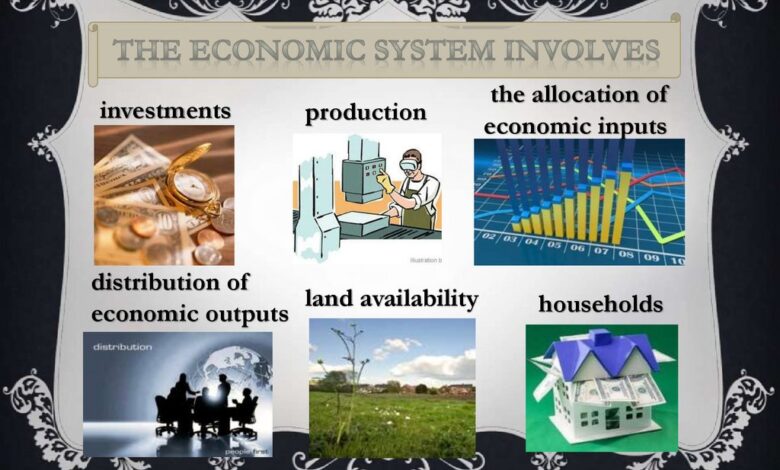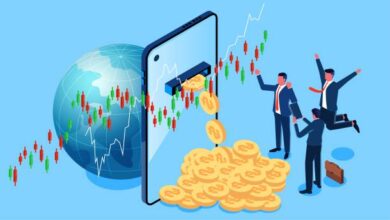
When it comes to understanding how economies function, the concept of Markets Economics plays a crucial role. Markets Economics refers to the study of how markets operate and how various economic agents, such as consumers, producers, and government, interact within these markets. In this blog post, we will delve into the fundamentals of Markets Economics, exploring topics such as supply and demand, market structures, government intervention, globalization, technology’s impact, behavioral economics, and emerging trends in the field.
Understanding the Basics of Supply and Demand
Supply and demand serve as the bedrock concepts underpinning Markets Economics, encapsulating the intricate dance between producers and consumers in any given marketplace. Supply is defined as the total amount of a specific good or service that is available to consumers, which producers are ready to sell at various price levels. Conversely, demand encompasses the desire and purchasing power of consumers for these goods and services at varying prices. The pivotal point where supply meets demand is known as the equilibrium, signifying the price at which the quantity supplied equals the quantity demanded.
- This equilibrium is not static but subject to shifts influenced by external factors such as changes in consumer preferences, technological advancements, and variations in the cost of production. For instance, a surge in demand for a new technology could drive prices up until the market adapts and supply increases to meet this new demand level. Similarly, a breakthrough that lowers production costs could increase supply, potentially lowering prices if demand remains constant.
- Understanding this dynamic is crucial for grasping how market prices are determined and how resources are allocated efficiently within an economy. It illustrates the constant interplay between the forces of supply and demand, a process that dictates not only the price of goods and services but also informs producers about what to produce and in what quantity. This foundational principle of Markets Economics illuminates the self-regulating nature of markets, revealing how economic agents are interconnected through the simple yet profound mechanisms of supply and demand.
Exploring Different Market Structures
Market structures in economics are classified based on the degree of competition and the power individual companies hold within the market. These structures significantly influence how prices are set, the level of efficiency in production, and the variety of choices available to consumers. The primary market structures include perfect competition, monopolistic competition, oligopoly, and monopoly.
- In a perfectly competitive market, numerous small firms sell identical products, ensuring no single entity can influence the market price. This scenario leads to a highly efficient allocation of resources, as firms produce at the lowest possible cost and prices reflect the true cost of production. Consumers benefit from uniform prices and a wide array of choices.
- Monopolistic competition characterizes a market where many firms sell similar but not identical products. Here, differentiation is key, as companies strive to stand out through branding, quality, or other attributes. This structure leads to more variety for consumers but can result in slightly higher prices due to the costs of differentiation.
- Oligopoly occurs when a few large firms dominate the market. These companies have significant market power, allowing them to influence prices and production levels. Competition in oligopolies can vary, with firms sometimes colluding to set prices or competing intensely.
- Lastly, a monopoly exists when a single firm controls the entire market for a product or service, often due to high barriers to entry or exclusive access to a resource. Monopolies can lead to higher prices and reduced innovation due to the lack of competitive pressure.
- Understanding these market structures is vital for analyzing the behavior of firms and the outcomes for consumers, including pricing, product availability, and innovation. Each structure presents unique challenges and opportunities for economic policy and business strategy.
The Role of Government in Markets
Government intervention in markets is crucial for maintaining fair play, safeguarding consumer rights, and promoting steady economic conditions. Through a variety of mechanisms such as antitrust laws, price controls, subsidies, and regulatory measures, governments seek to correct market imperfections and foster a competitive landscape. Antitrust laws, for instance, are designed to prevent monopolies and ensure that competition thrives, benefiting both consumers and the economy at large by encouraging innovation and keeping prices in check. Price controls can help stabilize volatile markets, preventing sudden price spikes in essential goods and services, which could otherwise lead to economic distress for consumers.
- Subsidies are another tool, often used to support emerging industries or essential sectors that are vital for the nation but may not be immediately profitable, such as renewable energy. By providing financial support, governments can stimulate growth in these areas, contributing to long-term economic sustainability and job creation. Taxes and regulations, meanwhile, serve to dissuade harmful practices, protect the environment, and ensure that businesses contribute fairly to society.
- In essence, the government’s role is to balance the scales, ensuring that markets function efficiently while protecting the interests of the public and the economy. This delicate balance requires constant adjustment and oversight to respond to new challenges and opportunities in the evolving marketplace. Through these interventions, governments aim to address failures and inefficiencies, paving the way for a more equitable and thriving economic environment.
The Impact of Globalization on Markets
Globalization has fundamentally reshaped the landscape of Markets Economics by facilitating a more interconnected global economy. This interconnectedness has been driven by advances in technology and reductions in trade barriers, allowing for an unprecedented flow of goods, services, capital, and labor across national borders. As a result, businesses have the opportunity to expand their operations internationally, reaching new customers and tapping into global supply chains for raw materials and production. For consumers, globalization has broadened the range of products available, often at lower prices, due to increased competition and efficiency in production and distribution.
- However, the effects of globalization are not uniformly positive. While it has contributed to economic growth and reduced poverty in many regions, it has also been associated with adverse outcomes such as widening income disparities, both within and between countries. The shift of manufacturing jobs from high-income to lower-income countries, for instance, has sparked debates about the social and economic impacts on affected communities. Additionally, the environmental implications of increased global trade, including higher carbon emissions and greater consumption of natural resources, pose significant challenges.
- Globalization has also intensified competition among businesses, pushing firms to innovate and improve efficiency to remain competitive on a global scale. This competitive pressure can lead to positive outcomes, such as technological advancements and better-quality products for consumers. However, it also places a strain on companies unable to compete effectively, leading to consolidation in certain industries and raising concerns about market concentration and the dominance of multinational corporations.
The Influence of Technology on Market Dynamics
The transformative power of technology has reshaped market dynamics, ushering in a new era of digitalization and connectivity. E-commerce platforms have democratized retail, allowing small businesses to reach global markets and providing consumers with unparalleled choice and convenience. The advent of artificial intelligence (AI) and machine learning is revolutionizing sectors from finance to manufacturing, optimizing processes, personalizing consumer experiences, and predicting market trends with unprecedented accuracy. Blockchain technology, meanwhile, is creating secure, transparent ways to conduct transactions and share information, fostering trust in digital interactions.
- However, the integration of technology into markets is not without challenges. Data privacy emerges as a paramount concern, with consumers and regulators increasingly scrutinizing how companies collect, use, and protect personal information. Cybersecurity threats loom large, as the digitization of financial transactions and sensitive data opens new avenues for cyberattacks. Moreover, the concentration of market power among a few tech giants raises questions about competition, innovation, and the broader implications for the economy.
- Technology’s impact on market dynamics is profound, driving efficiency and innovation but also presenting new hurdles. As markets adapt to this technological revolution, the balance between harnessing the benefits of these advancements and addressing the accompanying risks will be critical for sustainable economic progress.
Behavioral Economics and Market Decisions
Behavioral economics delves into the intricate ways in which psychological factors, social influences, and cognitive biases shape the decisions of market participants. Unlike classical economic theories that predicate decisions on purely rational grounds, behavioral economics acknowledges the complexity of human nature in economic activities. It investigates how individuals often rely on intuitive judgment rather than exhaustive analysis, how emotions can overshadow logical reasoning, and how societal norms and expectations guide financial behavior. For instance, the concept of ‘loss aversion’ illustrates that people tend to prefer avoiding losses over acquiring equivalent gains, a preference that can significantly influence investment strategies and consumer choices.
- Moreover, the influence of ‘herd behavior’ is another area where behavioral economics provides insights, showing how individuals in a market might mimic the actions of a larger group, sometimes leading to irrational market trends or bubbles. Behavioral economics also examines the impact of ‘overconfidence’, where individuals overestimate their knowledge or ability, affecting market outcomes through risky investments or consumption patterns.
- By integrating psychological insights into economic models, behavioral economics offers a more nuanced understanding of market dynamics. It aids in designing more effective marketing strategies, public policies, and financial products that align with actual human behaviors. Through its lens, we see not just the transactions or the numbers, but the human decisions and motivations that drive the markets. This perspective is invaluable for predicting market movements, crafting policies that nudge better financial decisions, and creating a more robust economic system that accommodates the diverse behaviors of its participants.
Emerging Trends in Markets Economics
The landscape of Markets Economics is continually being reshaped by innovative trends that signal a transformative shift in how value is created, exchanged, and perceived within the global economy. The ascent of the platform economy exemplifies this, where digital marketplaces facilitate exchanges between consumers and producers, significantly reducing transaction costs and revolutionizing sectors from retail to services. Similarly, the sharing economy is redefining ownership and consumption patterns, as peer-to-peer platforms enable the sharing of goods and services, from accommodations to transportation, emphasizing access over ownership.
- Sustainable finance is another critical trend, reflecting a growing recognition of the importance of environmental, social, and governance (ESG) factors in investment decisions. This movement towards sustainability is not just ethical but also practical, as investors increasingly understand that long-term profitability requires a commitment to responsible practices. Concurrently, the effects of climate change are prompting a reevaluation of economic models and market strategies, pushing for innovation in how we approach energy, agriculture, and manufacturing sectors.
- Moreover, the emergence of decentralized finance (DeFi) and digital currencies is challenging traditional financial systems and reimagining money exchange, lending, and investment practices. These technologies promise greater inclusivity and efficiency but also raise questions about regulation and security. Impact investing, focusing on generating social and environmental impact alongside financial returns, is gaining traction, reflecting a broader shift in societal values towards purpose-driven capitalism.
- As these trends gain momentum, they offer both opportunities and challenges, requiring adaptability and forward-thinking from businesses, policymakers, and individuals alike. Engaging with these emerging trends is crucial for anyone looking to understand the future direction of Markets Economics and its implications for the global economy.
Conclusion
Markets Economics provides a comprehensive framework for understanding the forces that shape economic activity and market behavior. From the foundational principles of supply and demand to the complexities of market structures and the nuances of government regulation, this field encompasses a broad range of factors that drive economic outcomes. The advent of globalization and technological innovations further complicates these dynamics, introducing new challenges and opportunities for businesses, consumers, and policymakers alike. Additionally, the insights from behavioral economics highlight the importance of psychological factors in economic decision-making, offering a more nuanced view of market interactions.
As emerging trends such as the platform economy, sustainable finance, and decentralized finance continue to evolve, they underscore the importance of adaptability and forward-thinking in navigating the future of Markets Economics. By delving into these various aspects, we enhance our understanding of how markets function and contribute to a more prosperous and equitable global economy.





